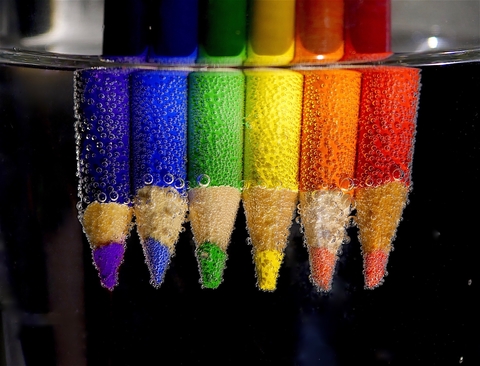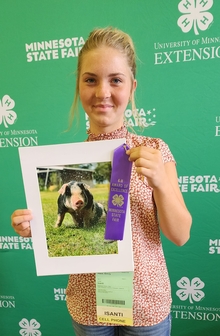Tell your story using photography!
What can you do?
In the photography project, you can:
- Learn about equipment basics, taking sharper pictures, lighting and flash techniques.
- Explore photo composition, approaches, sequencing and evaluating photographs.
- Use multiple cameras and even assemble a whole production team.
These are just some of the many ways you can participate in this project.
Project information
Get started with 4-H'ers in your area
- Contact your local 4-H office for more info.
Get started on your own
Begin your project learning using the following:
Try different genres
- Portraits: Photograph people alone or in small groups.
- Photojournalism: Display 3-5 photos together with captions. Together, they tell a story.
- Close-up: Print three images taken with a normal lens, macro lens or microscope.
- Light experiment: Take three photos of the same thing in different kinds of light.
Record keeping
- Reflect on your project and what you've learned using 4-H record keeping.
Participate in photo activities
To take your photography skills further, you can participate in photography challenges and contests offered throughout the year.
Past entries and grand prize winners
Take a look at past entries and grand prize winners for inspiration in our photography challenges guide.
2024
Other ways to get involved
- Enter your photos into a competition.
- Use your photography skills to help a local nonprofit organization tell its story, advertise its services or win a grant.
- Organize a field trip to a local business to see how they use photography to publicize their work.
- Teach a workshop on photography or image editing at a day camp.
Photography project resources for volunteers
Find training, camera kits and more support for volunteers on our 4-H Volunteer Resource Center site.
Interested in getting involved as a photography project volunteer?
Contact your local 4-H office or learn more about volunteering in 4-H.
Fair information
What does it mean to show at the fair?
For 4-H'ers, local and state showcase events (like the Minnesota State Fair) are not just fun events. They provide youth opportunities to exhibit the knowledge and skills they've gained throughout the year– and to continue their learning.
Contact your local 4-H office for photography project showcase opportunities near you.
Exhibit ideas and judging criteria
Get exhibit ideas and find out what the judge is looking for in the evaluation sheet and rubric.
Review the purple ribbon photographs guide for inspiration and examples of what photos have been successful in past competitions.
How to prepare your photos for the fair
- How to prepare your photo exhibit for the fair (slideshow)
Other information
Contact
Cora Rost, Extension educator with Minnesota 4-H Photography Project Development Committee (PDC), fourhphoto@umn.edu
Reviewed in 2024



